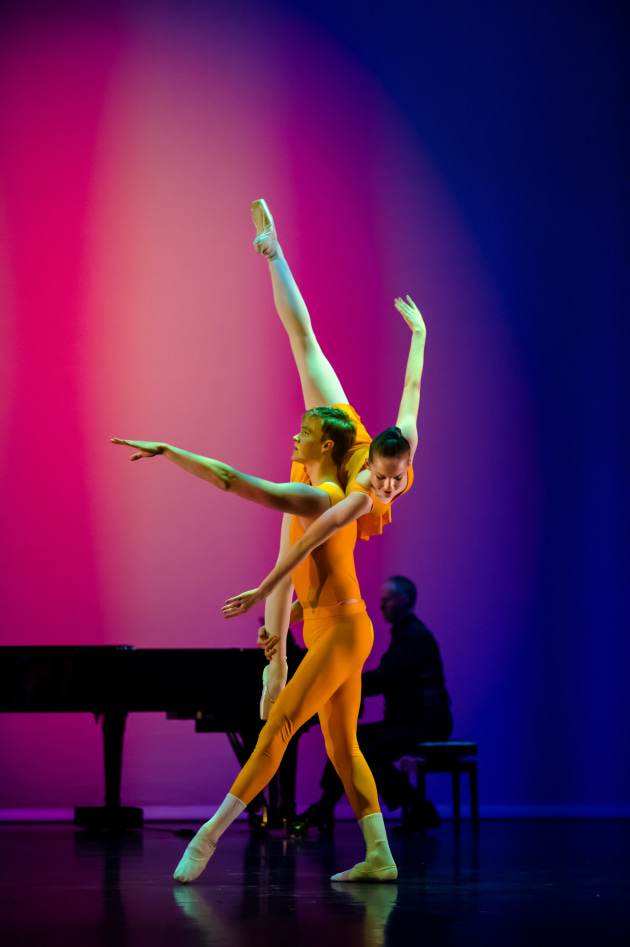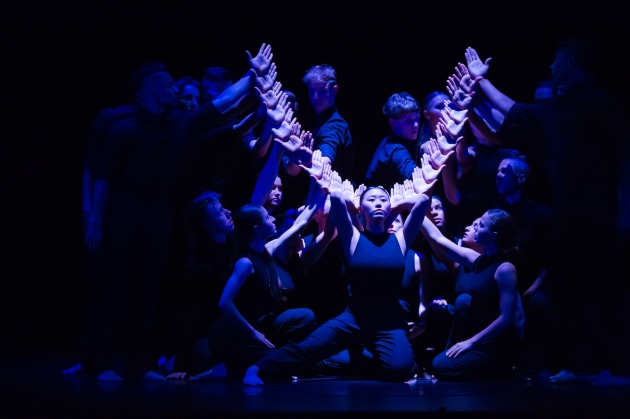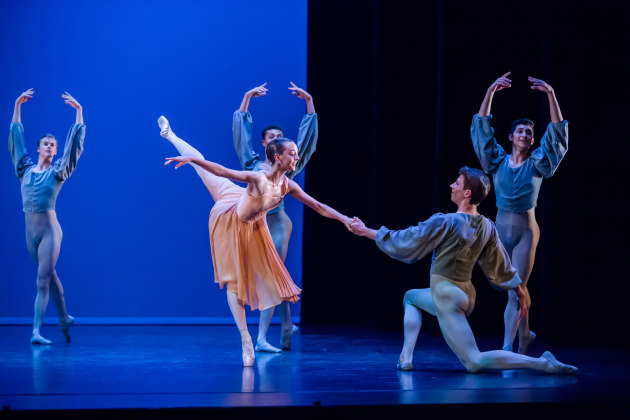New Zealand School of Dance: 50th Anniversary Graduation Season
St James Theatre, Wellington, 24 (7.30pm) and 25 November (1.30pm)
My trip to Wellington to see the New Zealand School of Dance’s "50th Anniversary Graduation Season" was exciting on various levels. A chance to join in the school’s milestone birthday celebrations, it was both my first time seeing the school in action and my first time visiting beautiful NZ.
Given NZSD’s excellent reputation, coupled with the knowledge that the Royal New Zealand Ballet (RNZB) would be making two guest appearances in honour of the school’s 50th anniversary, I approached Wellington’s grand old St James Theatre with anticipation. I was not disappointed. While the program of short classical, neoclassical and contemporary works was slightly too long (11 short works punctuated by two intervals over almost three hours) both the opening night and Saturday matinee confirmed that NZSD is continuing to produce excellent dancers… and choreographers. Appropriately for a major anniversary program, many of the works presented were by NZSD graduates.

Opening the program was Sue Nicholls's Beginners, Please! Short and sweet, the work consists of three arrangements of barre exercises. With each program increasing in age of dancer and complexity, Beginners, Please! was executed with grace and precision by NZSD scholars Acaciah Davies, Patrick Nawalowalo McCrory, India Shackel and Mason King, and NZSD full-time students Hosanna Ball and Saul Newport (opening night) and Olivia Moore and Calum Gray (matinee).
Nadine Tyson’s arrangement of The Nutcracker's “Tempo di Valse” provided ample opportunity for NZSD dancers to showcase their artistic and technical skills. As lead soloist, second year student Jaidyn Cumming was radiant in both performances, right down to her beautifully arched feet. The four supporting soloists exuded charm and confidence, with Isaac Goh (third year) and Bo Hao Zhan (second year) excellent partners to Alice Su (third year) and Alice Tsang (second year), as well as to Cumming. The icing on the cake was the professional consistency and clarity of the arm and leg lines of the corps.
Val Caniparoli’s Aria (1997) is a sculptural solo work for a male dancer. Against the operatic strains of music from Handel’s Rinaldo, the dancer’s masked face, stately presentation and curlicuing hands give this neoclassical work’s opening a courtly feel. This gives way to a more dramatic, contemporary aesthetic as the dancer peels off the mask. On opening night Mali Comlekci (second year) gave a heart-felt performance with his mobile torso and expressive face, while graduating student Jack Whiter gave a more restrained and controlled interpretation at the matinee. Both dancers are to be congratulated on their work with this challenging role.
Comic and stylised, Curious Alchemy, created earlier this year by Loughlan Prior, provided a pleasing change of pace. A neoclassical work set to two string quartets by Beethoven and Saint-Saëns respectively, this quartet for two women and two men has a cartoon-like, almost slapstick aesthetic with its snappy pas de deux and slick duets. Curious Alchemy was performed with charisma at both shows by second year students Jaidyn Cumming, Saul Newport, Clementine Benson and Song Teng.
And so to Sarah Foster-Sproull’s Forgotten Things, first performed in 2015 and created in collaboration with 2015 and 2017 students. Choreographing for a group of more than 20 students is no mean feat, but Foster-Sproull took full advantage of student numbers when she created this magical contemporary work, set to an electronic score by Andrew Foster. Multiple fists form an undulating spine; repeating palms become antlers, antennae, that dissolve as the outstretched hands close. At times the dancers become an amorphous creature, at others they break away into seething sub-groups, limbs popping, heads shaking. Whilst the second and third years gave a captivating performance as a whole, mention must be made of graduating student Jill Goh, whose solos marked her as one to watch.

Closing the first act was the RNZB’s Mayu Tanigaito and Joseph Skelton performing the "Wedding Pas de Deux" from Don Quixote. Whilst some lifts looked unsteady in both performances, the solos by each dancer were a treat. In particular, Tanigaito’s explosive grande jete en seconde and her impeccable balance in both arabesques and pirouettes were lovely to watch, as were Skelton’s lofty leaps and crisp beats.
Sir Kenneth Macmillan’s "Concerto Pas de Deux", which opened Act II, is no mean feat even for the most seasoned of performers, with technically complex partnering that moves off and on balance. First year student Olivia Moore and second year Calum Gray (opening night) and second years Hosanna Ball and Saul Newport (matinee) performed these difficult manoeuvres with calm maturity.
Exploring the ways in which bodies “respond and adjust in space” to contrasting music, S.U.B. (Salubrious Unified Brotherhood), is a contemporary duet. We see the dancers move from electronic-inspired robotic rage to a state of almost lethargic release as the soulful sounds of “Feeling Good” kick in, finishing with folk-inspired chattering feet and mouths. Choreographed by Victoria Colombus with NZSD third years Connor Masseurs and Toa Paranihi, this work teeters between the comic and the ominous, and was performed with style and grace by Masseurs and Paranihi in both programs.
Like Act I’s "Tempo di Valse", NZSD’s rendition of Balanchine’s Allegro Brilliante showcased the talents of its soloists (third year students Emma-Rose Barrowclough and Jack Whiter) as well as its corps. As is typical of Balanchine, the work demands impeccable timing to its Tchaikovsky score, and the many canons of this work were delivered with precision. Barrowclough and Whiter’s partnership impressed on both nights, the many challenging sections of pas de deux expertly delivered.

The final work of Act II was Michael Parmenter’s The Bach. Set to Bach’s Efreut euch, ihr Herzen cantata, this work contrasts courtly formality with arching hinges, generous plies, and fluid collapses. Although beautifully performed by 16 second and third year students, this work lacked the clout of the earlier contemporary offerings, partly because of its repetitive structure, and partly because of its position on a long program.
After two densely-packed acts, it was hard not to feel slightly fatigued as we returned to the auditorium after second interval but the opening electronic smash-chord of William Forsythe’s seminal contemporary ballet, In the Middle, Somewhat Elevated, provided a highly effective wake-up call… and good thing too. RNZB’s performance of Forsythe’s ground-breaking 1987 work was outstanding. In the Middle is all about pushing technique to its absolute limits and the RNZB dancers were fearless. Swinging their limbs like pendulums, tipping perilously off balance, exploding into sudden pirouettes and tours en l’air, they exhilarated the audience with their daring.
All in all, a wonderful program. Here’s to the next 50 years, NZSD.




